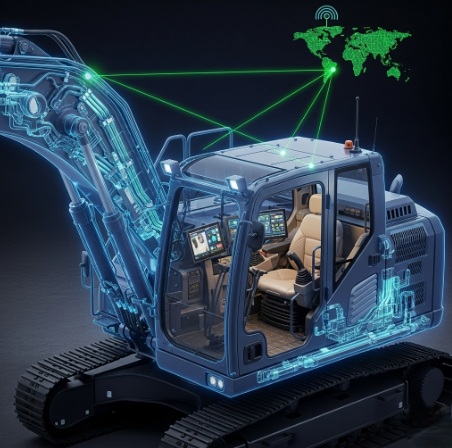
Gone are the days when excavating was just about brute force. Today’s excavating plants are marvels of engineering, combining immense power with incredible precision. This transformation is thanks to significant advancements in technology. From the way they transmit power to how they are controlled, every aspect has been refined to make these machines more efficient, safer, and more versatile. Let’s delve into the technology behind modern excavation plants and see what makes them so remarkable.
The Power of Hydraulic Systems
At the core of every modern excavator is a complex hydraulic system. This technology is what gives the machine its immense strength to dig, lift, and push heavy loads. Think of it like the muscles of the machine. A hydraulic system works by using pressurized fluid, typically oil, to transmit force. An engine-driven pump pressurizes this fluid, sending it through hoses and valves to hydraulic cylinders and motors. When the fluid pushes on a piston inside a cylinder, it creates a powerful linear motion, which is what moves the excavator’s boom, arm, and bucket.
The control valves in the system act as the brain, regulating the flow and pressure of the fluid. This allows the operator to precisely control the speed and force of each movement. For example, a high-pressure, low-flow setting is perfect for breaking through tough rock, while a high-flow, low-pressure setting is used for quickly moving large amounts of loose soil. This fine-tuned control is a key reason modern excavating plants are so effective.
GPS and Automation for Unmatched Precision
Precision is paramount in civil engineering, and modern excavating plants achieve it with the help of GPS and automated systems. These technologies allow a machine to dig with a level of accuracy that was once impossible. The process starts with a digital blueprint of the project, which is loaded into the machine’s computer. The system then uses GPS to pinpoint the excavator’s exact location and position in real time, often with an accuracy of a few centimeters.
As the operator works, the on-screen display shows them exactly where they are in relation to the digital plan, including the correct depth and slope. Some advanced systems even have an automated control feature that can automatically adjust the bucket’s position to ensure it follows the specified grade. This not only makes the digging process faster but also significantly reduces human error and the need for constant manual checks by a survey team, ultimately saving time and money.
Operator Cabins: The Command Center
The operator’s cabin has evolved from a simple seat to a sophisticated command center designed for comfort and control. Modern cabins are ergonomically designed to reduce operator fatigue during long workdays. Features like adjustable, air-suspended seats and climate control systems make the environment comfortable in any weather.
The controls themselves have also undergone a major transformation. Traditional levers have been replaced by joystick controls that require less effort and provide smoother, more responsive movements. Digital displays in the cabin give the operator real-time information about the machine’s performance, from fuel consumption and engine status to the depth of the dig. These advancements not only improve the operator’s experience but also boost safety and productivity by keeping them comfortable and well-informed.
Advanced and Versatile Attachments
Modern excavating plants are more than just diggers; they are multi-purpose tools thanks to a wide range of advanced attachments. These tools can be quickly swapped out using hydraulic quick couplers, allowing a single machine to perform various tasks on a single job site. A hydraulic breaker, for instance, can turn a digging machine into a demolition powerhouse, shattering concrete and rock with a percussive force.
For drilling holes for foundations or utility poles, an auger attachment is used. This helical-shaped tool drills into the ground quickly and precisely. For cutting through metal beams or pipes during demolition, a pair of powerful hydraulic shears can be attached. Other attachments include grapples for handling logs or debris, and mulchers for clearing vegetation. This versatility means contractors can get more done with fewer machines, making operations more cost-effective and efficient.
References
- Caterpillar Inc. (2020). “Machine Control and Guidance Systems.” Technical paper.
- Komatsu Ltd. (2021). “Hydraulic Technology in Construction Equipment.” Engineering report.
To learn more about the specifics of hydraulic systems, visit this detailed guide on how excavator hydraulics work.
Leave a Reply